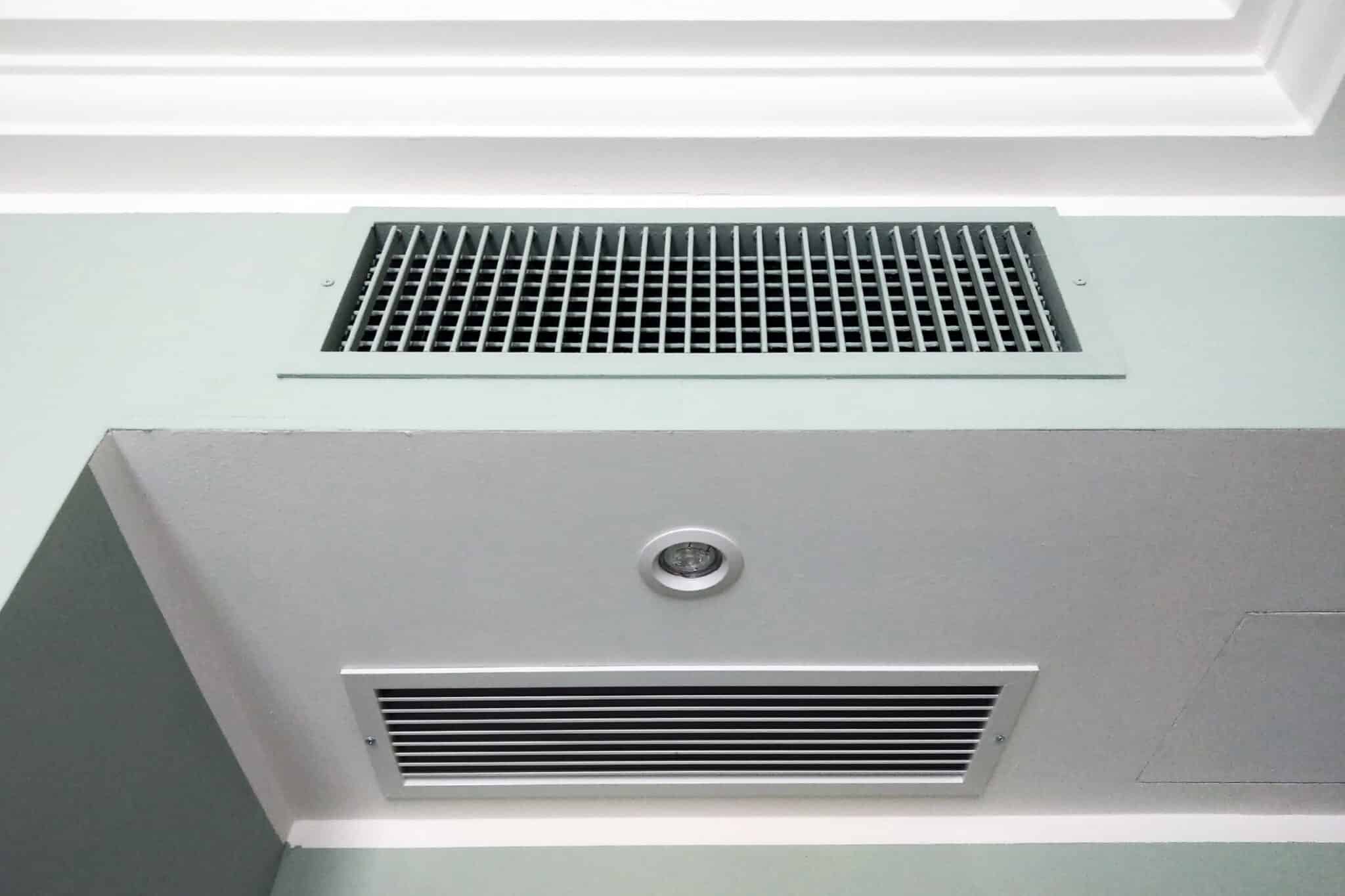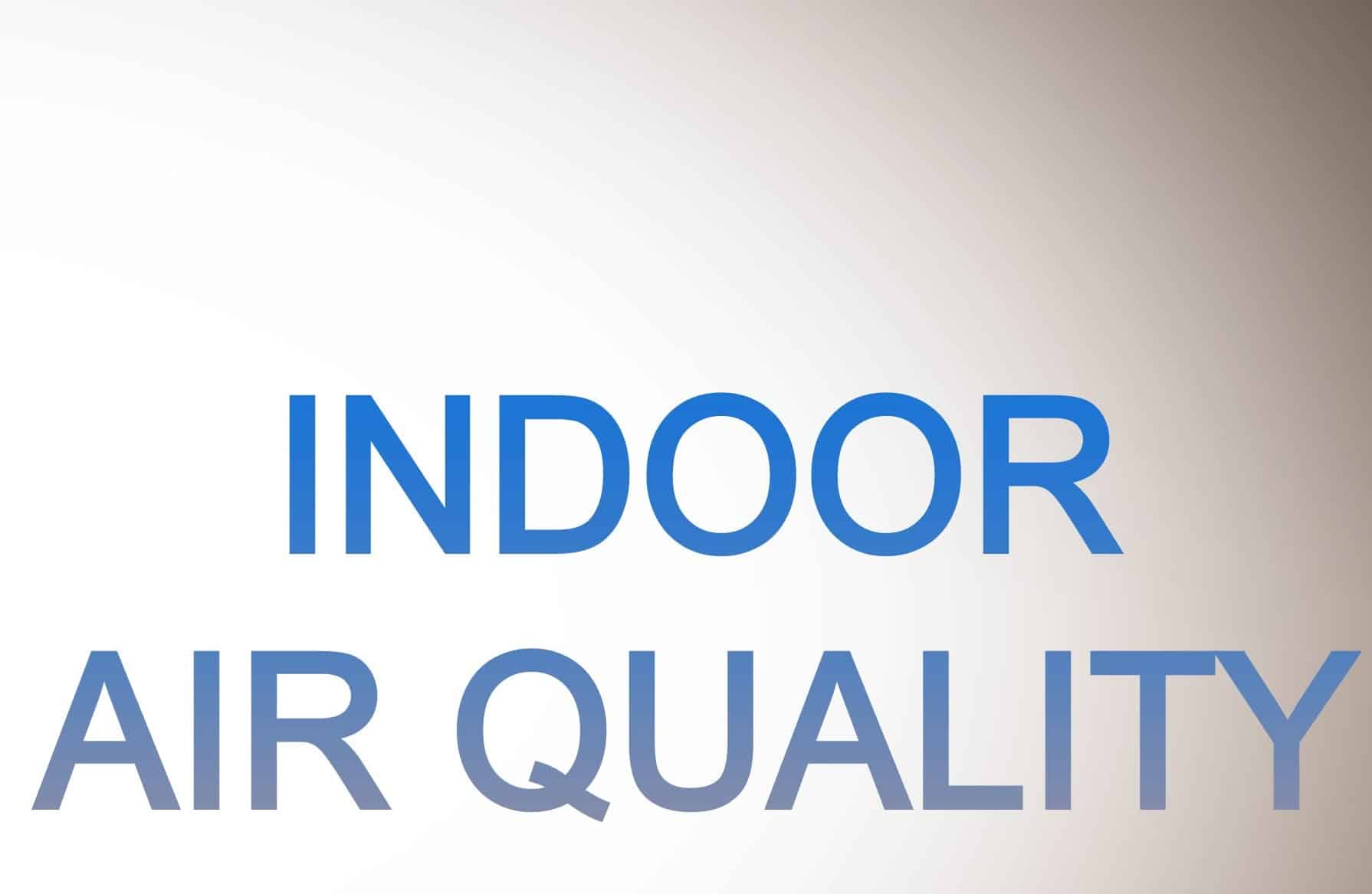Quick Tips to Improve Your Home’s Air Quality This Fall
- Impact on Health: Poor indoor air quality can cause respiratory issues, allergies, and other health problems.
- Seasonal Shifts: Fall brings unique challenges like increased use of heating systems that can affect indoor air quality.
- Common Pollutants: Dust mites, mold, pet dander, and outdoor pollutants can easily enter your home.
- Home Prep: Regular HVAC maintenance, sealing windows, and optimizing ventilation can significantly improve indoor air quality.
- Air Purification: Consider using air purifiers with HEPA filters to trap harmful particles.
- Humidity Control: Keep humidity levels in check to prevent mold growth and dust mites.
- Safe Cleaning: Switch to natural cleaning products to reduce chemical pollutants.
- Allergen Management: Regular cleaning and choosing hypoallergenic materials can help reduce allergens.
As the crisp air of fall arrives, we spend more time indoors, making it essential to focus on improving the air quality in our homes. With the right strategies, you can breathe easier and enjoy a healthier living environment throughout the season. This guide will walk you through practical tips and methods to enhance indoor air quality, ensuring your home remains a safe haven from allergens, pollutants, and moisture-related issues.
For residents in Lancaster, PA, Reading, PA, and surrounding areas, these tips are especially crucial as local environmental factors can influence indoor air quality. Taking action now will help you avoid common fall-related indoor air quality issues specific to your region.
Common Sources of Indoor Air Pollution in Fall
As fall sets in, it’s important to recognize the common sources of indoor air pollution that can compromise your home’s air quality. Identifying these sources is the first step toward creating a healthier indoor environment for the season.
1. Heating Systems: Furnaces and Fireplaces
As the temperatures drop, many households start using furnaces, fireplaces, and other heating systems. While these keep your home warm and cozy, they can also introduce pollutants into the air. Furnaces, especially improperly maintained, can emit carbon monoxide and other harmful gases.
Fireplaces, although charming, can release particulate matter and volatile organic compounds (VOCs) that contribute to indoor air pollution. Regular maintenance of heating systems, including cleaning and inspections, is essential to prevent these pollutants from affecting your indoor air quality.
2. Indoor Allergens: Dust Mites, Mold, and Pet Dander
Indoor allergens become more prevalent in the fall due to increased indoor activities and the use of heating systems. Dust mites thrive in warm, humid environments, and as we turn on our heating systems, the indoor humidity can increase, creating ideal conditions for these pests.
Mold spores can also become more common, particularly in areas where moisture accumulates, like bathrooms and basements. Pet dander, another common allergen, tends to build up indoors as pets spend more time inside during cooler months. Regular cleaning, vacuuming, and using allergen-proof covers on mattresses and pillows can help minimize these allergens.
3. Outdoor Pollutants Entering the Home
Even though we spend more time indoors during fall, outdoor pollutants can still find their way into our homes. This includes pollen, dust, and smoke from outdoor burning. These pollutants can enter through open doors, windows, and cracks in the structure of your home. Once inside, they can circulate through your HVAC system, further degrading your indoor air quality. Sealing windows and doors, and using air purifiers can help reduce the impact of outdoor pollutants on your indoor environment.
By understanding and addressing these common sources of indoor air pollution, you can take effective steps to improve the air quality in your home this fall.
Preparing Your Home for Better Indoor Air Quality
As fall approaches, taking proactive steps to prepare your home for the seasonal shift can significantly improve your indoor air quality. The following strategies focus on maintaining a clean and healthy indoor environment throughout the cooler months.
1. Seasonal Maintenance Checklist
A well-maintained home is the foundation of good air quality. Start by creating a seasonal maintenance checklist. This should include tasks like cleaning or replacing air filters in your HVAC system, inspecting and servicing your furnace, and ensuring that all vents and ducts are clean and unobstructed. Also, don’t forget to check and replace the batteries in your carbon monoxide detectors, as heating systems are a common source of this dangerous gas.
2. Sealing Windows and Doors to Reduce Outdoor Pollutants
One of the simplest yet most effective ways to improve indoor air quality is to seal any gaps or cracks in your windows and doors. These small openings can allow outdoor pollutants, such as dust, pollen, and exhaust fumes, to enter your home. Use weatherstripping or caulking to seal these areas, which also has the added benefit of improving your home’s energy efficiency by keeping the cold air out and the warm air in.
3. Regular HVAC Inspection and Maintenance
Your HVAC system plays a crucial role in maintaining indoor air quality. Regular inspection and maintenance are vital, especially before the onset of fall when your heating system will be in constant use. Schedule a professional HVAC inspection to ensure that your system is running efficiently and that there are no leaks or blockages in the ductwork. Additionally, consider having your ducts cleaned to remove any accumulated dust and debris that could be recirculated into your home.

Improving Ventilation Systems
Proper ventilation is crucial for maintaining healthy indoor air quality, especially as we head into fall when homes are sealed up to keep the warmth in. Good ventilation ensures that fresh air circulates throughout your home while stale air and pollutants are effectively removed.
1. The Role of Ventilation in Air Quality
Ventilation helps regulate indoor air quality by diluting and removing pollutants that accumulate from activities like cooking, cleaning, and heating. Without adequate ventilation, harmful particles, such as dust, pet dander, and chemicals from household products, can linger in the air, leading to respiratory problems and other health issues. Effective ventilation systems help to reduce these risks by continuously bringing in fresh air and expelling contaminated air.
2. How to Optimize Your Home’s Ventilation
To optimize your home’s ventilation, start by ensuring that your existing ventilation systems, such as exhaust fans and range hoods, are functioning correctly. Use exhaust fans in bathrooms and kitchens to quickly remove moisture, odors, and airborne contaminants. Consider installing additional vents or upgrading to a more powerful range hood if needed. In rooms without direct ventilation, like basements, using portable fans to circulate air can also help.
Another important step is to regularly open windows and doors when weather permits. Even in cooler weather, allowing fresh air to flow through your home for short periods can help remove stale air and reduce indoor pollutant levels. However, be mindful of outdoor air quality conditions, such as high pollen counts, that may require keeping windows closed.
3. Installing or Upgrading Exhaust Fans and Range Hoods
If your home lacks sufficient ventilation, installing or upgrading exhaust fans and range hoods can make a significant difference. Choose energy-efficient models that are powerful enough to handle the specific needs of each room. For example, a high-quality range hood in the kitchen can capture and remove smoke, grease, and cooking odors more effectively, while a strong bathroom exhaust fan can prevent moisture buildup and mold growth. Regularly clean and maintain these systems to ensure they continue to operate efficiently.
Air Purification Methods
As we seal our homes against the chill of fall, the importance of air purification becomes even more significant. While ventilation helps to manage indoor air quality, air purifiers can take your efforts to the next level by directly removing harmful particles from the air.
1. Selecting the Right Air Purifiers
Choosing the right air purifier for your home depends on your specific needs. HEPA (High-Efficiency Particulate Air) filters are the gold standard for air purification, capable of capturing up to 99.97% of airborne particles as small as 0.3 microns. These are particularly effective against allergens like dust, pollen, and pet dander. If you’re concerned about chemical pollutants or odors, consider a purifier with activated carbon filters, which are designed to absorb gases and odors. For a more comprehensive approach, some advanced models combine HEPA, carbon, and UV filters to target a broader range of pollutants.
2. Pros and Cons of HEPA Filters, Ionizers, and UV Purifiers
Each type of air purifier has its advantages and limitations. HEPA filters are highly effective at removing physical particles but do not address chemical pollutants or odors. Ionizers work by charging particles so they stick to surfaces, but they can produce ozone, which may be harmful to respiratory health.
UV purifiers use ultraviolet light to kill bacteria and viruses, making them a good choice for combating biological contaminants. However, they are less effective against allergens and do not remove dust or other particles from the air. Consider your specific indoor air quality concerns when choosing a purifier, and opt for a model that best suits your household needs.
3. Integrating Air Purifiers with Your HVAC System
For whole-home air purification, integrating an air purifier with your HVAC system can be an efficient solution. These systems work by filtering the air as it circulates through your home, ensuring that every room benefits from cleaner air. You can install a HEPA filter directly into your HVAC system or use an air purifier that is designed to connect with your existing ductwork. Regular maintenance, such as changing filters and servicing the HVAC system, is essential to keep the integrated air purifier working effectively.
Reducing Humidity Levels Indoors
Maintaining the right humidity levels in your home is crucial for good indoor air quality, especially during the fall when moisture levels can fluctuate. High humidity can lead to mold growth and dust mites, both of which can negatively impact your health.
1. The Relationship Between Humidity and Air Quality
Humidity plays a significant role in indoor air quality. When humidity levels are too high, it creates a breeding ground for mold and dust mites, which thrive in moist environments. Mold spores can spread through the air, leading to respiratory issues, allergies, and even more severe health problems. On the other hand, low humidity can cause dry skin, respiratory discomfort, and irritation in the eyes and throat. Therefore, keeping humidity levels in the optimal range—between 30% and 50%—is essential for maintaining a healthy indoor environment.
2. Using Dehumidifiers and Moisture Control Strategies
Using a dehumidifier to keep humidity in check is one of the most effective solutions. Dehumidifiers remove excess moisture from the air, making your home less hospitable to mold and dust mites. Place dehumidifiers in areas prone to dampness, such as basements, bathrooms, and laundry rooms. For larger spaces, consider a whole-house dehumidifier that integrates with your HVAC system.
In addition to dehumidifiers, there are other moisture control strategies you can implement. Fix any leaks promptly to prevent water from seeping into walls and floors. Ensure your home is well-ventilated, especially in areas where moisture builds up, like the kitchen and bathroom. Also, use exhaust fans when cooking or showering to remove excess humidity from the air.
3. Preventing Mold Growth
Preventing mold growth requires a proactive approach to moisture management. In addition to using dehumidifiers, inspect your home regularly for signs of mold, such as musty odors, discoloration on walls, or spots on ceilings. If you find mold, clean it immediately using appropriate cleaning products. In cases of significant mold infestations, consider hiring a professional to ensure thorough removal.
Maintaining proper airflow is also essential for mold prevention. Keep furniture away from walls to allow air circulation, and avoid overwatering indoor plants, as excess moisture in the soil can contribute to mold growth.
Choosing Safe Cleaning Products
The cleaning products you use in your home can have a significant impact on indoor air quality. Many conventional cleaning products contain chemicals that can release harmful volatile organic compounds (VOCs) into the air, contributing to respiratory issues and other health problems. Choosing safer alternatives can help maintain a healthier indoor environment.
1. Identifying Harmful Chemicals in Common Cleaning Products
Many everyday cleaning products contain chemicals that can be harmful to your health. Ingredients like ammonia, bleach, and synthetic fragrances are common culprits that release VOCs into the air. These compounds can cause irritation of the eyes, nose, and throat, and prolonged exposure may lead to more serious health concerns, such as asthma or other respiratory conditions. Reading labels carefully and avoiding products with hazardous ingredients is the first step in reducing your exposure to indoor pollutants.
2. Switching to Low-VOC or Natural Cleaning Solutions
Switching to low-VOC or natural cleaning solutions is a simple and effective way to improve indoor air quality. Products labeled as low-VOC are formulated to emit fewer harmful gases, making them a safer choice for your home. Additionally, natural cleaning solutions, which often use ingredients like vinegar, baking soda, and essential oils, are not only less harmful but can be just as effective for everyday cleaning tasks. Look for eco-friendly products that are free from harsh chemicals and synthetic fragrances.
If you prefer DIY solutions, making your own cleaning products can be an excellent way to control what’s in your home environment. For example, a mixture of vinegar and water can be used to clean glass and surfaces, while baking soda is great for scrubbing sinks and bathtubs.
3. Proper Storage and Usage to Minimize Air Contamination
How you store and use cleaning products also plays a role in air quality. Always store cleaning products in a well-ventilated area, away from living spaces. Keep them tightly sealed to prevent fumes from leaking into the air. When using any cleaning products, ensure that the area is well-ventilated by opening windows or using exhaust fans.
Avoid mixing cleaning products, especially those containing bleach and ammonia, as this can create dangerous fumes. Lastly, use products sparingly and only as directed, which not only helps maintain indoor air quality but also extends the life of the product.
Managing Indoor Allergens
As we spend more time indoors during the fall, managing indoor allergens becomes crucial to maintaining a healthy living environment. Allergens like dust, mold, and pet dander can easily accumulate, leading to increased allergy symptoms and respiratory issues.
1. Best Practices for Reducing Dust, Mold, and Pet Dander
To minimize indoor allergens, regular cleaning is key. Dust mites, which thrive in bedding, carpets, and upholstered furniture, can be reduced by washing bedding weekly in hot water and vacuuming frequently with a vacuum cleaner equipped with a HEPA filter. Dusting surfaces with a damp cloth helps trap dust rather than spreading it into the air.
Mold is another common allergen, particularly in damp areas like bathrooms and basements. Prevent mold growth by keeping these areas well-ventilated and using a dehumidifier to maintain optimal humidity levels. Regularly check for leaks and address any water damage promptly.
Pet dander, a significant allergen for many, can be managed by grooming pets regularly and keeping them out of bedrooms and off furniture. Frequent vacuuming and using air purifiers can also help reduce the amount of dander in the air.
2. Regular Cleaning and Vacuuming Tips
Consistency is critical when it comes to keeping allergens at bay. Vacuum your home at least once a week, focusing on high-traffic areas and spots where pets spend a lot of time. Use a vacuum with a HEPA filter to ensure that allergens like dust and pet dander are trapped rather than recirculated into the air.
In addition to vacuuming, dust all surfaces regularly using a microfiber cloth or a damp rag. Wash curtains, rugs, and other fabrics that can harbor dust mites and allergens. For hard-to-reach areas, like ceiling fans and vents, use a duster with an extendable handle to clean these spaces effectively.
3. Selecting Hypoallergenic Materials for Home Furnishings
Choosing hypoallergenic materials for your home furnishings can make a big difference in reducing allergens. Opt for hardwood or tile flooring instead of carpets, as these materials do not trap dust and allergens as easily. If carpets are necessary, choose low-pile options and clean them regularly.
For bedding, consider using allergen-proof mattresses and pillow covers, which help prevent dust mites from settling in. Hypoallergenic pillows and duvets made from synthetic materials are also a better option than those made from feathers or down.
When it comes to furniture, select pieces with washable covers or those made from leather or synthetic leather, which do not harbor allergens as much as fabric upholstery.
FAQs about Indoor Air Quality Concerns
-
How often should air filters be changed?
Indoor air quality filters should be changed every 1 to 3 months, depending on the type of filter and the amount of pollutants in your home. Homes with pets or residents with allergies may require more frequent changes.
-
What’s the best way to test for radon and other pollutants?
The best way to test for radon is to use a radon test kit, which can be purchased online or at home improvement stores. For other pollutants, consider using an air quality monitor that detects various contaminants, including VOCs and particulate matter, or hire a professional to conduct a comprehensive indoor air quality assessment.
-
Are air quality improvements worth the investment?
Yes, investing in air quality improvements is worthwhile, as it can significantly reduce the risk of respiratory issues, allergies, and other health problems. Cleaner air also contributes to a more comfortable living environment and can improve overall well-being.
-
What plants are best for improving indoor air quality?
Plants like spider plants, snake plants, peace lilies, and Boston ferns are excellent for improving indoor air quality. These plants help filter toxins like formaldehyde, benzene, and carbon monoxide from the air.
-
How can I reduce indoor allergens effectively?
To reduce indoor allergens, regularly clean your home using a vacuum with a HEPA filter, wash bedding weekly, control humidity levels, and use air purifiers. Also, keep pets out of bedrooms and off furniture, and choose hypoallergenic materials for furnishings.






